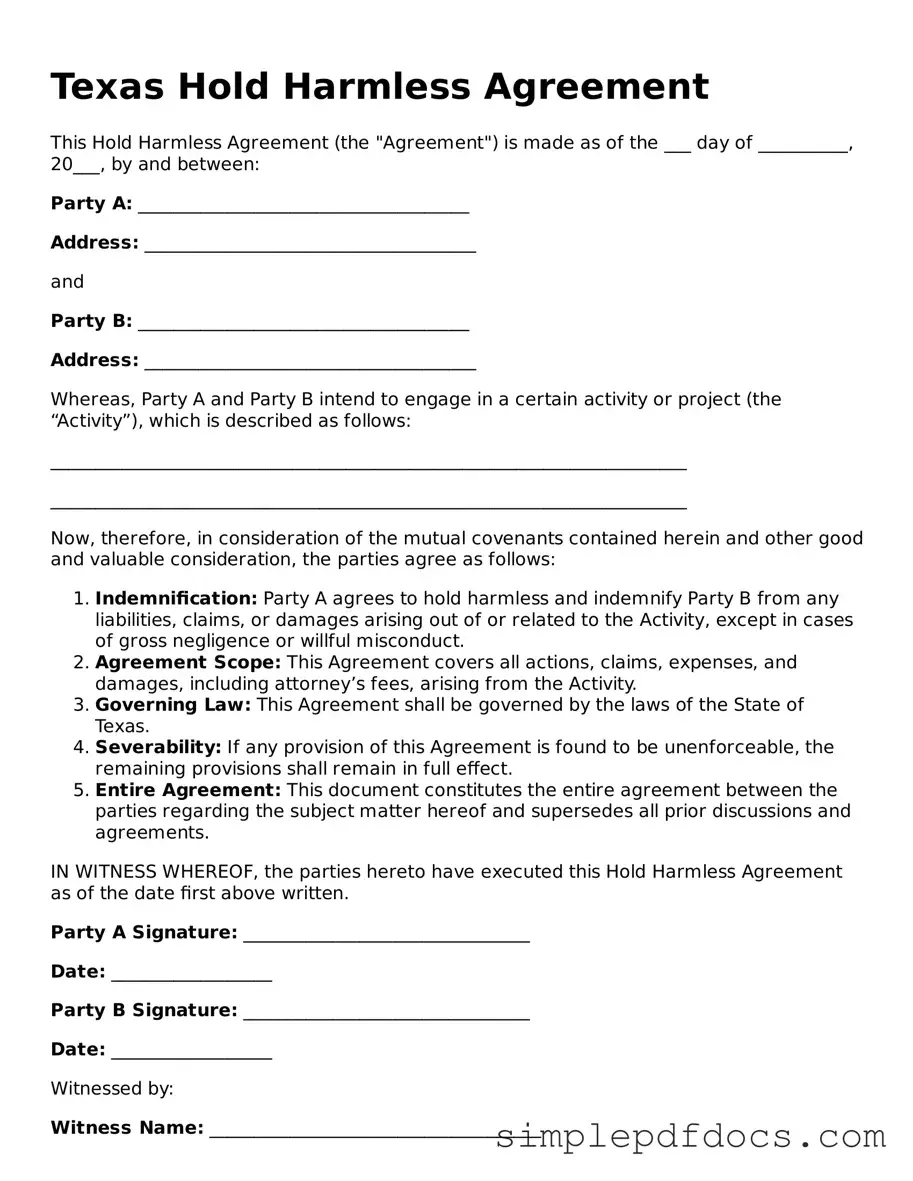Legal Hold Harmless Agreement Document for the State of Texas
A Texas Hold Harmless Agreement is a legal document designed to protect one party from liability for any injuries or damages that may occur during a specific activity or event. By signing this agreement, participants acknowledge the risks involved and agree not to hold the other party responsible. This form is commonly used in various situations, such as events, rentals, or construction projects, providing peace of mind for all parties involved.
Get Document Here
